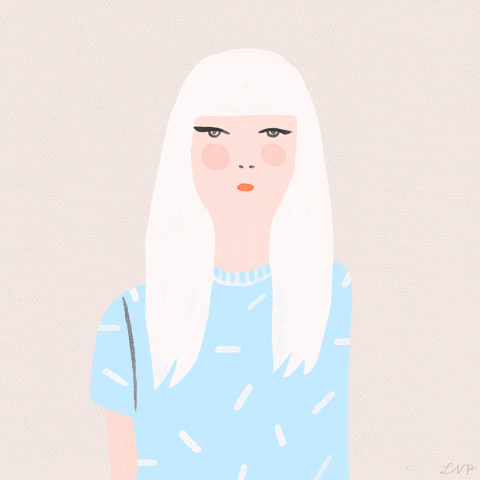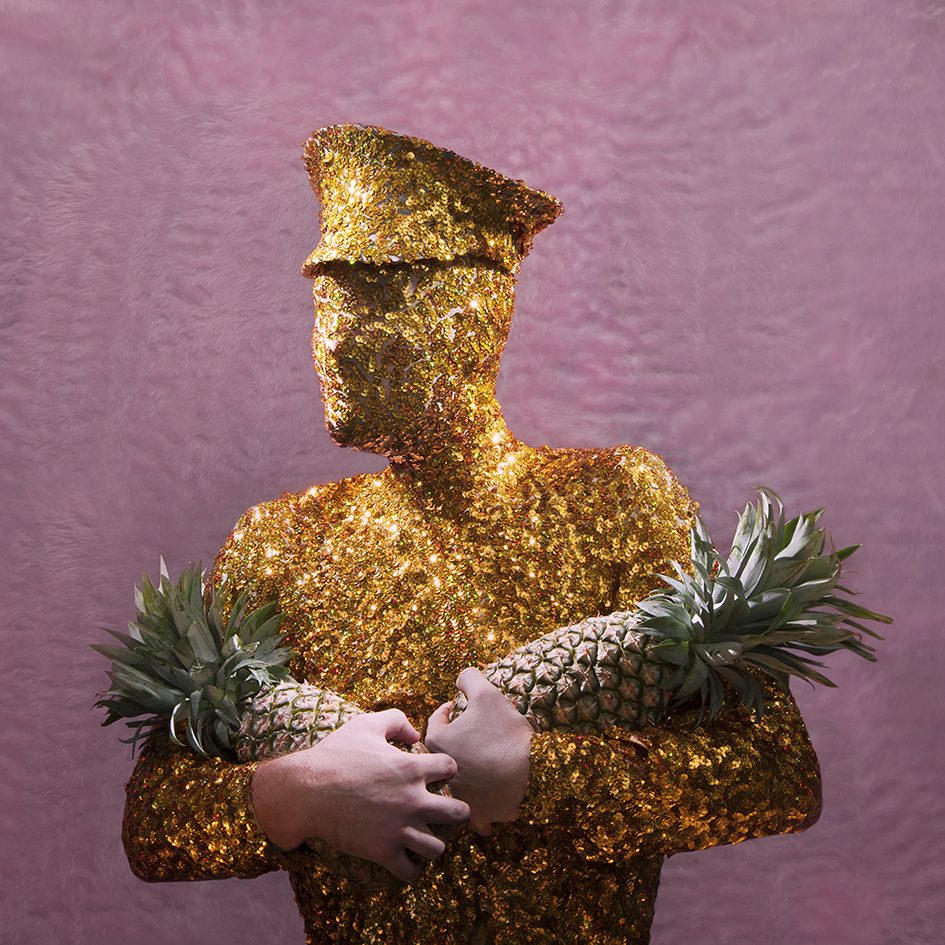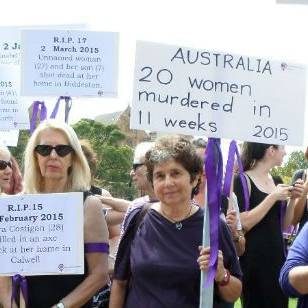 Online attacks aren’t separate from real life violence
Online attacks aren’t separate from real life violence
**Trigger Warning**
(This article contains sexual assault themes.)
I’m a woman.
I’m a lesbian.
I make those statements because to do so–to even say this–is actually a radical act. In some countries, including our own, the reality of being a lesbian could get you killed–by the state, by a random stranger, by anyone, really, even, sometimes, your own family.
But statistically, nearly all violence against women is perpetrated by men. That’s just fact. Violence against women is pandemic, according to the World Health Organization. The United Nations Status Report on Women, updated in October 2015, states one in three women globally is a victim of male violence–equivalent to a billion women worldwide.
Being a lesbian makes women especially vulnerable to non-partner violence, according to the UN report which states: “In 2014, 23 per cent of non-heterosexual women (those who identified their sexual orientation as lesbian, bisexual or other) interviewed in the European Union indicated having experienced physical and/or sexual violence by non-partner perpetrators, compared with five per cent of heterosexual women.”
Sexual assault, stalking, and domestic violence are major public health problems in the U.S., according to the Centers for Disease Control and Prevention (CDC). The CDC report on Violence Against Women states: “Approximately 1 in 5 women have been raped in their lifetimes within the U.S, and almost 50% of American women have experienced sexual assault other than rape during their lives.”
The CDC also stipulates who is doing the violence and that the pandemic the WHO and UN addressed is nowhere near ending: “Men commit the majority of violent acts against women. While efforts have been made to prevent men from perpetrating sexual assault, domestic violence, and stalking, these efforts have yet to major impact the rates of violence against women.
This is because such efforts often involve overturning long-held cultural and societal beliefs. Given this reality, violence against women will likely continue despite best efforts to minimize women’s vulnerability to such acts unless male risk behaviours are successfully addressed.”
That reality of my being a woman and being a lesbian has gotten me raped twice–once as a teenage college freshman, the other time recently, both times by strangers. That I have been raped more than once is not even anomalous.
According to the National Women’s Survey, “Re-victimization is a problem for women and adolescents. Thirty-nine per cent of rape victims in the NWS [National Women’s Survey] had been raped more than once, and 41.7% of the adolescent victims said that they had been sexually assaulted more than once.”
In addition, sexual assault is often part of hate crimes against lesbians. There are no current data for corrective rape in the U.S., but it is pandemic in South Africa and Jamaica, among other countries.
The first time I was raped, I was also cut with a knife by the two men who offered to drive me home from my college campus. I see one of the scars every day on my upper left thigh. It’s pale–decades have gone by–but thick and visible. I can still recall all the particulars of that assault; time has dulled the literal wounds, but not the psychological ones.
In the second rape, I was choked, punched, slapped, bitten, sodomized and raped. In broad daylight outside my own home by a man I later discovered from police at the Special Victims Unit, had been raping women with his very particular modus operandi in my mostly black, mostly poor neighbourhood. We hadn’t been alerted to the serial rapist who preyed at “lunchtime,” because, I believe, all his victims until me had been black.
Like them, I was a victim of opportunity. I was there. I was cheerful, saying hello to the man who offered to help me in my front yard, unable to get back into my house before he was on me, pinning my arms behind my back, threatening to kill me, pushing me into a neighbour’s yard.
I survived both these horrific acts of violence. But they altered me. The second rape–perhaps we are less resilient in middle age–changed me. I have never been the same. I never will be the same.
The experience of not just the rape, but the police (I never reported the first rape), did something to me. Shattered something inside me. Made me not less willing to say hello to random people walking down my block, but made me distrust the people I always, somehow, thought would protect me.
The police officer who came to my house literally walked me through the rape–the imprint of my body was still in the ivy in my neighbour’s yard, a torn piece of the T-shirt dress I had been wearing on a branch of a bush. I was asked to recount the experience while looking at the place where I had been raped, my exit blocked by the six-foot-plus officer standing between me and running out of the alley next to my house.
The detective at SVU said, before anything else, that if I were lying I would be prosecuted. He semi-apologized later when he saw the extent of my injuries which couldn’t possibly have been self-inflicted and included bite marks around both nipples and black bruises the size of dinner plates on each thigh where the rapist had leaned on me.
The windows had been wide open in the ladies room at the SVU. I had, for a brief moment, considered jumping. Statistically, many victims of rape/sexual assault have suicidal feelings.
The daily newspaper I wrote for over the span of nearly two decades refused to publish an opinion piece by me about my experience. “It might come to trial, we can’t risk bias.” The rape crisis centre in my city for which I had been a volunteer in college treated me horribly, badgering me and telling me if I didn’t report, I would be complicit in other women being raped.
A victims’ services organization told me I was lucky I was a lesbian because I would be able to “get right back into sex” again, unlike straight women whose partners are men. They could offer no resources for counselling specific to lesbians.
Each of those things was another assault. That’s a sadly clichéd truism of rape reporting. I don’t regret reporting–I did end up writing about my experience for one of the independent weeklies in my city, bringing attention not just to the rapist trolling my neighbourhood, but to the treatment of rape victims which seemed the same in the 21st century as in all the centuries prior–victim-blaming first and foremost.
I knew if I–a middle-aged white professional who has dealt with law enforcement all my adult life as a reporter–had wanted to run from the police, how would other, less privileged victims feel? Is it any wonder two-thirds of women don’t report?
I tell this story not to trigger anyone, but as a reminder of how insidious and insidious male violence and misogyny is in our culture and how inextricable they seem to be from each other. And also to remind women that lesbians are not immune to rape or male violence just because they partner with other women.
I have written here and in my forthcoming book on the erasure of lesbians, about the corrective rape of lesbians and the honour killings of lesbians. There are too many links to include here, but that I have written more than a dozen articles on the topic of violence against lesbians in just the past year is significant. [ Erasing Our Lesbian Dead, It’s Not Just India’s Rape Problem, Violence Against Lesbians]
Real-life violence against women is fed on social media by men perpetrating constant harassment against women on every major social media venue, regardless of so-called “terms of service” agreements. That more women have been banned from Facebook for posting photos of breastfeeding or discussing gynecological cancers than have men for harassing women speaks a disturbingly loud volume in the ears of women–but goes unheard by men.
Executives at the main sites–Facebook, Twitter, Reddit, Instagram–make it difficult for women to report violent comments or pile one of groups of men and get any kind of redress. Yet the experience of women on social media is increasingly fraught–study after study has determined women get upwards of 25 to 100 times the abuse men receive online.
Many women have just left social media rather than fight it. Others are forced to maintain private accounts, often defeating the entire function of speaking to a larger community and even those accounts do not prevent women from being harassed.
Men feel entitled to attack women without any provocation: our mere existence is justification enough. Just as street harassment begins in adolescence and seems not to end at any age, trolling of women on social media is omnipresent.
Few women escape it, but if we are outspoken feminists or radical lesbians or just women using a female-centric hashtag or thread, the attacks are more likely. Men feel entitled to say whatever they want to us and in whatever language, no matter how vile.
Apparently some dudes want to “debate” me and clearly, this is a debate in good faith, AMIRITE LADIES?! pic.twitter.com/rfrlqfjTZa
— Julie S. Lalonde (@JulieSLalonde) January 27, 2016
Sometimes this online abuse is egregious, as in the case of the attacks on Australian feminist activist Coralie Alison [Why Do Hundreds of Men Want to Rape and Kill Coralie Alison?] or the cases of comedian Lindy West, activist writer Sarah Jeong or Feminist Frequency founder and gamer Anita Sarkeesian. The attacks on and threats against Sarkeesian were so extreme, she and her family were forced to move temporarily.
Ironically, not sure I’ve ever seen any group so prone to confirmation bias as anti-feminist “skeptic” bros.
— Lindy West (@thelindywest) January 28, 2016
Other times it’s just…awful. Women report abuse, but even in cases like those involving well-known women, suspensions from social media are rare. I filed a dozen reports for extreme harassment last weekend alone against men who continued to stalk me even after I muted and blocked them. Twitter has yet to get back to me.
And like reporting real-life violence, most of us don’t report. We know where abusing women rates on the scale of straight white male executive concerns. After all, the biggest decision Twitter recently made was to change the star fave button to a heart that reads like. No discussion about all the harassment.
Mark Zuckerberg and his wife Priscilla Chan just had a baby girl–Max. Did that inspire Zuckerberg to address the harassment of women on Facebook? No.
With all this unrestrained and unregulated abuse of women, it’s not surprising the presidential election has become a focal point for abusive attacks on social media–especially as one of the two frontrunners is a woman, former Secretary of State Hillary Clinton.
The attack on Fox News commentator Megyn Kelly, instigated by GOP presidential frontrunner Donald Trump, became a headline on Jan. 26 when Trump refused to attend the Jan. 28 GOP Debate hosted by Fox News and moderated in part by Kelly. Trump previously called out Kelly as being on her period during a previous debate where she asked him to address his sexism and he made an anti-lesbian joke about Rosie O’Donnell.
Fox News stands behind Trump, but many well-known allegedly impartial male political pundits seemed gleeful at Trump’s behaviour, some even calling it “strategic.”
It’s no surprise that presidential candidate Hillary Clinton has been the target of misogynist attacks. Vile comments about her and photoshopped pictures of her predominate on social media–always liked and retweeted hundreds of times.
But what’s been new this political season is the attacks from what has come to be called #BernieBros–men who support Clinton rival for the Democratic nomination, Sen. Bernie Sanders. In fact, the abuse has gotten so extreme–and is so well-documented–that after the Democratic Town Hall on Jan. 25, Sanders’ Rapid Response Director, Mike Casca, sent out this tweet:
if you support @berniesanders, please follow the senator’s lead and be respectful when people disagree with you.
— mike casca (@cascamike) January 26, 2016
Even New Yorker writer Emily Nussbaum, a restrained and charming voice on Twitter noted this:
Man, the Feel The Bern crew (as opposed to Bern himself) is such a drag. Say anything pro-Hil & they yell “bitch” & “psycho.” V idealistic!
— emily nussbaum (@emilynussbaum) January 26, 2016
And writer Sady Doyle noted about Clinton–before facing an onslaught herself:
You know, this woman puts in decades of work & when she applies for the big job, all I hear is that she’s trash, shit, garbage, worthless.
— Sady Doyle (@sadydoyle) January 26, 2016
Doyle followed that with,
And if that alarms you, and you speak up about it, all you hear is that YOU are trash, shit, garbage, worthless.
— Sady Doyle (@sadydoyle) January 26, 2016
The reality is, there are no safe spaces for women in real life, but social media, where TOS should protect us from egregious abuse while still offering everyone free speech, should be a virtual safe space.
Google “Man Threatens to Kill Woman Online” and see what happens. Literally, hundreds of stories–all different–of men who threatened women online and then perpetrated violence against women will come up. Serial killer Elliot Rodger posted threats against women online, yet no one stopped him.
And you can see the entitlement everywhere offline that leads to the entitlement online. At the Democratic Town Hall on CNN Jan. 25, a young white guy said this to Hillary Clinton (although CNN insists he was not a plant from the Sanders’ campaign): Noting his generation supports Sanders over Clinton, he said, “I just don’t see the same enthusiasm from younger people for you.
In fact, I’ve heard from quite a few people my age that they think you’re dishonest. But I’d like to hear from you on why you feel the enthusiasm isn’t there.”
Cue the misogyny. No one is asking that question of Martin O’Malley or any of the GOP men. This is a question for the woman. And also presumes there’s no enthusiasm for her candidacy, which even a casual glance at social media makes clear is false.
But that meme is proffered on TV news by male pundits every night. Never mind how many women are practically desperate for a female president and one who is so accomplished about whom President Obama said last week in an interview, “She would make a great president and be ready on Day One.”
There’s no escaping misogyny, there’s no escaping the harassment and violence that go hand-in-hand with it. There’s no escaping the many ways in which misogyny breeds harassment, breeds violence and because men are in charge of every avenue of recourse for women, justice is elusive.
As the CDC notes–society has bred this attitude toward women. It allows men to attack us in real-life space, in virtual space, in any space. It allows a 20something to sneer at a woman more than twice his age who is a former Secretary of State and talk to her dismissively as if she is his peer.
It allows men to drive women from their homes, fearing for their lives, it allows police departments to neglect to tell the women of one or another neighbourhood that a man is trolling, looking for victims.
Male violence is always there, stalking us. Lesbians may be one or more steps removed from men, but none of us is safe from them. And we never know which men are violent, which friend or family member will turn on us, which seemingly helpful neighbour is a serial rapist.
We can’t leave the world. We can’t become paranoid recluses. We must live our lives. We can, however, keep speaking out. We can keep warning other women. We can demand that the terms of service in our lives respond to us. We can take as many actions as possible. We can demand that decent men call out the abusers.
Remember that.
Some days it seems hopeless. But hope is always fluttering nearby, within our grasp.
As Arundhati Roy, wrote, “Remember this: We be many and they be few. They need us more than we need them. Another world is not only possible, she is on her way. On a quiet day, I can hear her breathing.”




